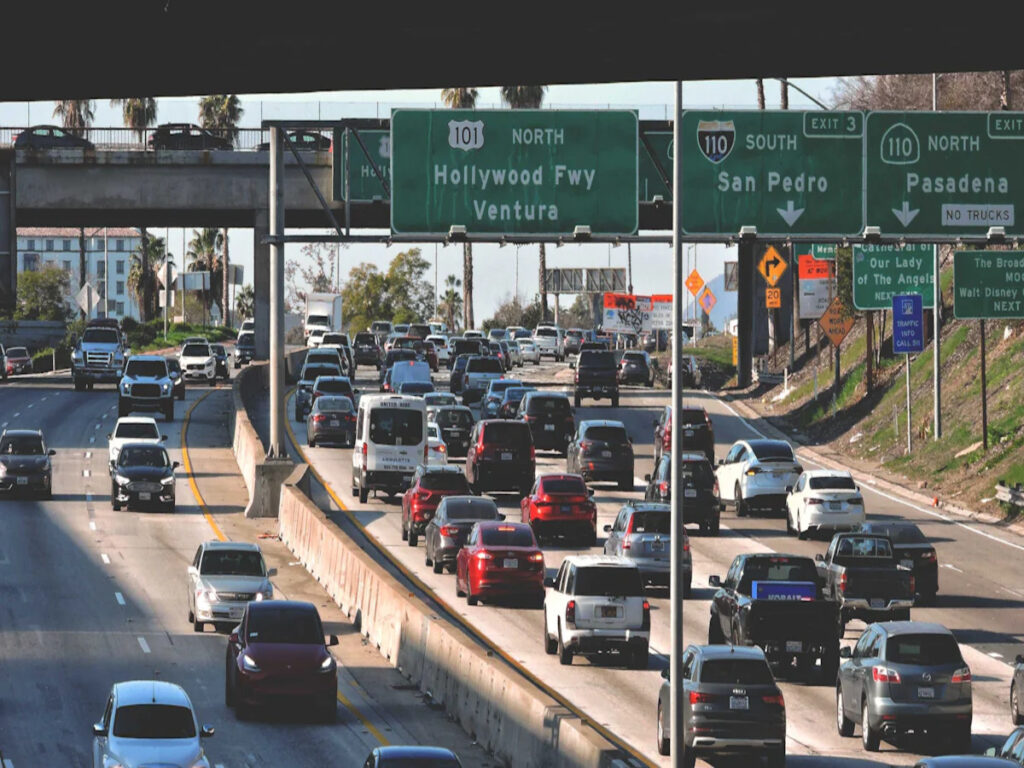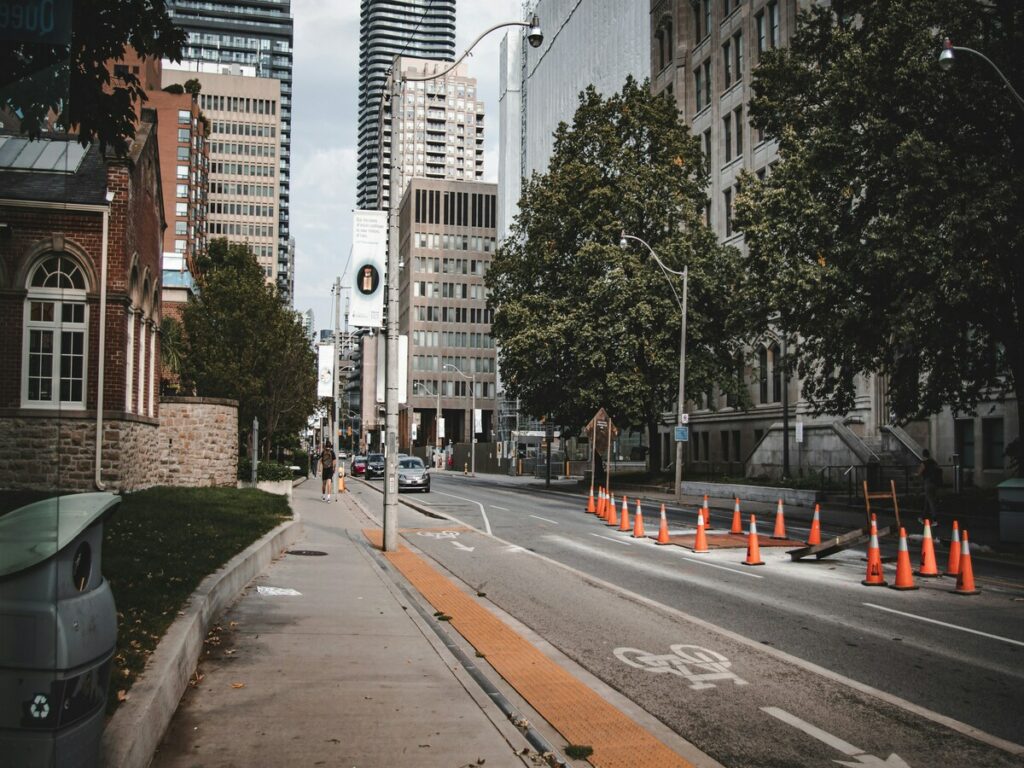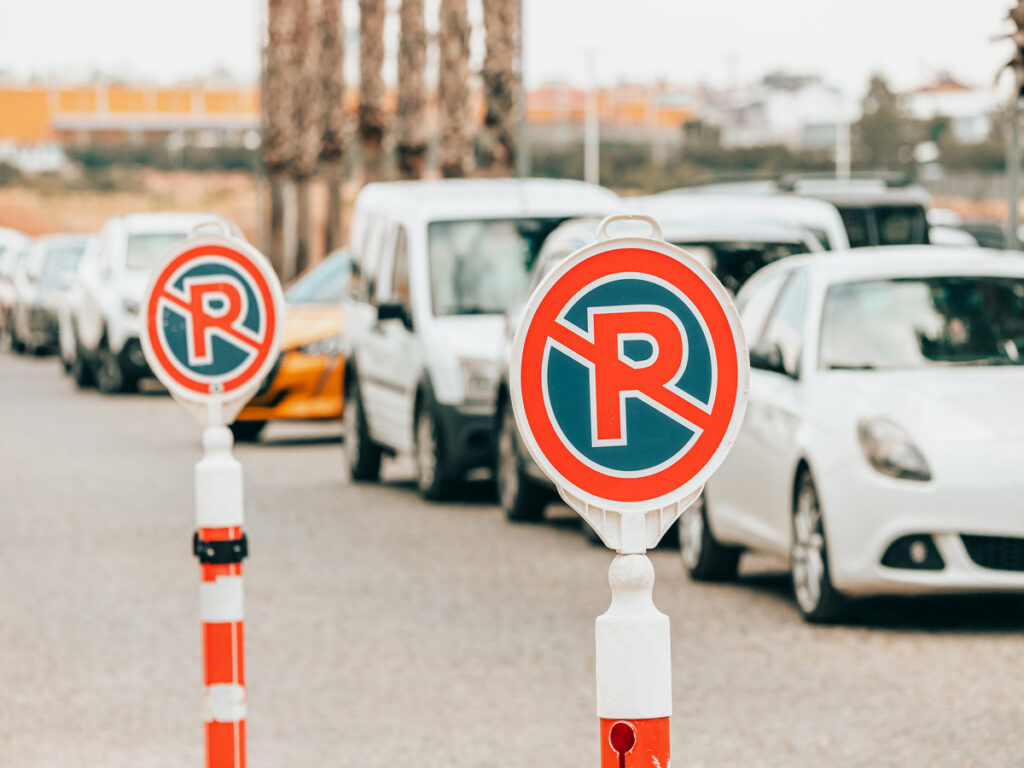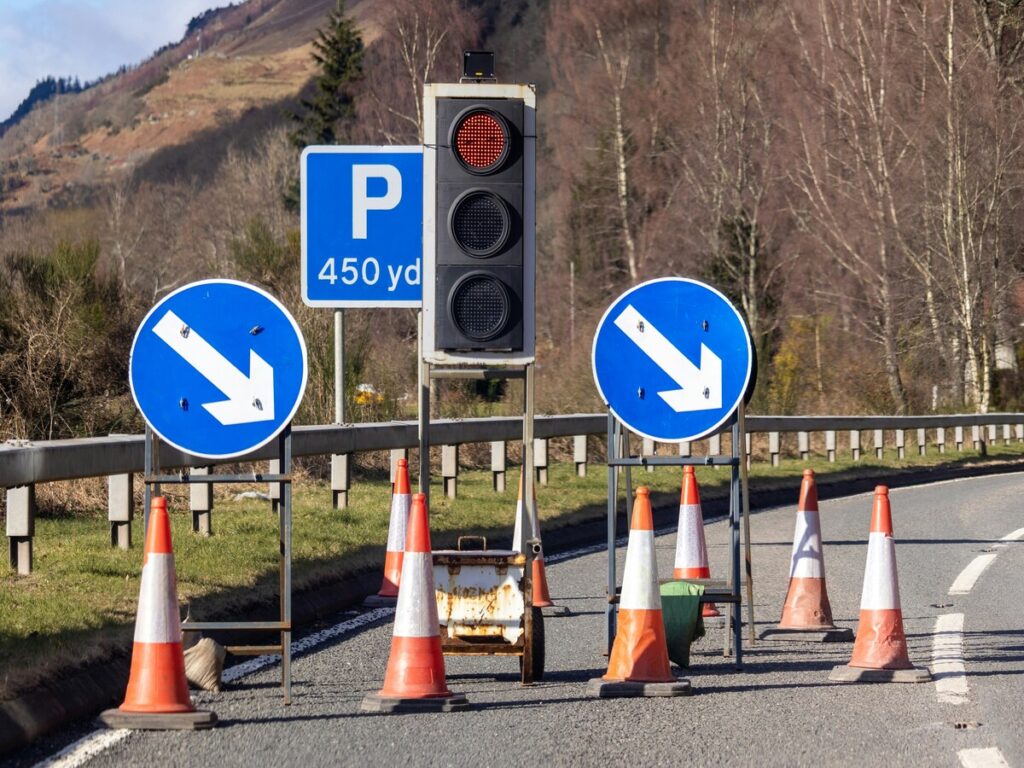
When you’re driving on California freeways, आपने शायद दुर्घटनाओं के बाद पीछे छोड़ दिया ट्रैफ़िक शंकु देखा है. ये चेतावनी शंकु केवल यादृच्छिक बचे हुए नहीं हैं - वे सभी को सुरक्षित रखने में महत्वपूर्ण भूमिका निभाते हैं. कैलिफोर्निया के फ्रीवे पर देखें 250,000 दुर्घटनाओं every year, हजारों लोगों के परिणामस्वरूप घातक. यही कारण है कि सुरक्षा प्रोटोकॉल यह सुनिश्चित करते हैं कि चेतावनी शंकु उज्ज्वल नारंगी हैं, रात की दृश्यता के लिए चिंतनशील, और कठिन मौसम को संभालने के लिए पर्याप्त मजबूत. वे ड्राइवरों को जल्दी से खतरे वाले क्षेत्रों में मदद करते हैं, आपातकालीन उत्तरदाताओं को वह स्थान देते हैं जो उन्हें सुरक्षित रूप से काम करने की आवश्यकता है. इसलिए, अगली बार जब आप उन चेतावनी शंकु को देखते हैं, याद रखें कि वे आपकी सुरक्षा के लिए वहां हैं.
The Frequency and Severity of Accidents on California Freeways
California’s freeways are some of the busiest in the country, and that means accidents happen often. If you’ve ever wondered why, it’s not just bad luck. The design and conditions of these roads play a big role.
How California’s Freeway System Contributes to High Accident Rates
California’s freeway system is massive, but it struggles to keep up with the number of vehicles on the road. Here’s why accidents are so common:
- The state has the most congested freeways in the U.S., साथ 86% of urban highways packed during rush hours.
- Vehicle travel has increased by 17% तब से 2000, but lane capacity hasn’t grown at the same pace.
- Poor road conditions, like potholes and uneven pavement, make driving more dangerous.
- Structurally deficient bridges add to the risks.
When you combine these factors with the sheer number of drivers, it’s no surprise that California motor vehicle accidents happen so frequently. तेज, distracted driving, and impaired driving only make things worse. These behaviors reduce reaction time and increase the chances of a car accident.
The Importance of Cones in Mitigating Accidents in High-Traffic, High-Speed Environments
अब, let’s talk about how warning cones help. After an accident, these orange warning cones aren’t just there to look official. They’re lifesavers. On California’s high-speed freeways, road hazards can appear out of nowhere. Cones warn you to slow down and stay alert.
They also create a safe space for emergency responders. Imagine trying to clean up debris or assist injured drivers while cars zoom by at 70 miles per hour. Cones give responders a buffer zone, reducing the risk of further accidents.
For you as a driver, these orange warning cones act as a visual cue. They guide you around danger zones and help maintain order in chaotic situations. उनके बिना, navigating an accident site would be much more stressful—and dangerous. वह कहाँ है ओपीटी यातायात शंकु पर हस्ताक्षर करता है अंदर आएं, providing clear and reliable direction to keep you safe on the road.
Safety Considerations for Warning Cones

Protecting Drivers and Emergency Responders
Preventing secondary accidents by marking hazardous areas.
Warning cones are more than just bright markers. When you approach an accident site, these orange warning cones immediately signal danger. They guide you away from road hazards like debris, ईंधन फैलता है, or damaged vehicles. This reduces the risk of a secondary car accident, which could happen if drivers don’t notice the danger in time.
For emergency responders, orange warning cones create a clear boundary. They keep the area organized and prevent unnecessary risks. Imagine a chaotic scene without cones—drivers might unknowingly enter restricted zones, putting themselves and others in harm’s way. By marking hazardous areas, orange warning cones help maintain order and save lives.
Ensuring visibility for drivers approaching accident sites.
Visibility is everything when it comes to safety. Warning cones are designed to stand out, यहां तक कि कम रोशनी की स्थिति में भी. उनका उज्ज्वल नारंगी रंग और चिंतनशील स्ट्रिप्स catch your attention, ensuring you see them from a distance. This gives you enough time to slow down and navigate safely around the accident site.
Without these traffic warning cones, drivers might not realize there’s an accident ahead until it’s too late. The traffic warning cones act as an early warning system, helping you avoid sudden stops or dangerous maneuvers. They’re a simple yet effective tool for keeping everyone on the road safe.
सुरक्षित क्षेत्र बनाना
Providing a buffer for first responders and cleanup crews.
When emergency crews arrive at an accident scene, their safety becomes a top priority. Warning cones create a buffer zone, giving responders the space they need to work without worrying about oncoming traffic. This buffer allows them to focus on their tasks, whether it’s assisting injured passengers or clearing debris.
For cleanup crews, traffic cones are equally important. They define the work area, वाहनों को सुरक्षित दूरी पर रखना. This reduces the chances of accidents involving workers on the roadway.
Reducing risks during ongoing investigations or repairs.
कभी-कभी, accident scenes require extended investigations or repairs. Warning cones help manage these situations by clearly marking restricted areas. They ensure that drivers stay out of zones where investigators or repair crews are working.
By keeping traffic organized, traffic cones minimize confusion and reduce risks. They’re a temporary but essential tool for maintaining safety until the road is fully restored. ओपीटी यातायात शंकु पर हस्ताक्षर करता है are designed to offer high visibility and durability, ensuring that drivers can navigate safely through hazardous zones, यहां तक कि सबसे चुनौतीपूर्ण परिस्थितियों में भी.
Logistical Challenges in Cone Removal

Even though warning cones are essential for safety, removing them isn’t as simple as it might seem. Several logistical challenges make immediate cone retrieval tricky.
Resource and Personnel Constraints
Limited availability of staff to retrieve cones immediately.
After an accident, emergency crews focus on what matters most—helping people and clearing the scene. Retrieving cones often takes a backseat. You might think there’s a dedicated team for this, but resources are limited. Emergency responders and cleanup crews already have their hands full. Adding cone collection to their tasks could slow down critical recovery efforts.
Prioritization of accident response over cone removal.
When a car accident happens, हर सेकंड मायने रखता है. आपातकालीन दल prioritize saving lives, treating injuries, and clearing road hazards. Removing traffic warning cones comes later. This approach ensures that responders can focus on what’s most urgent. It’s all about keeping the scene safe and getting traffic moving again as quickly as possible.
Traffic and Timing Issues
High traffic volumes make immediate removal unsafe.
California freeways are some of the busiest in the country. Imagine trying to retrieve traffic warning cones while cars are speeding by. It’s not just unsafe—it’s nearly impossible. Crews would risk their own safety by stepping into active traffic lanes. That’s why traffic warning cones often stay in place until conditions improve.
Waiting for off-peak hours to minimize disruption.
Timing is everything when it comes to cone removal. Crews often wait for off-peak hours, like late at night or early in the morning, to retrieve them. This minimizes disruptions for drivers and ensures a safer environment for workers. It’s a practical solution that balances safety and efficiency.
Traffic Management Protocols for Warning Cones
Role of Traffic Management Agencies
एजेंसियों को पसंद है Caltrans play a huge role in managing warning cones on California freeways. They don’t just place cones randomly; they follow strict protocols to ensure everything runs smoothly. उदाहरण के लिए, Caltrans uses traffic warning cones that are 28 इंच tall and weigh 10 पाउंड. These traffic warning cones are sturdy enough to stay in place, यहां तक कि हवा की स्थिति में.
Managing cones on busy freeways is no small task. Did you know that closing just 1.5 miles of a single lane requires about 80 कोन? That’s a lot of equipment to handle! To make things more efficient, Caltrans uses advanced technology like the AHMCT machine. This machine can place and retrieve cones at speeds of up to 10 मील प्रति घंटा, all while being controlled from the safety of a truck cab.
Here’s a quick look at how Caltrans manages cones:
| साक्ष्य प्रकार | विवरण |
|---|---|
| Injury Claims | California paid $36,000 in injury claims in 1990, rising to $321,000 में 1994. |
| Cone Usage | 80 cones are needed for every 1.5 miles of lane closure. |
| Cone Specifications | Cones are 28 inches tall and weigh 10 पाउंड. |
| Automated Machine | The AHMCT machine places and retrieves cones at up to 10 मील प्रति घंटा. |
These protocols ensure traffic warning cones are placed and removed systematically, सभी को सुरक्षित रखना.
संचार और समन्वय
Managing traffic cones during accidents isn’t a one-person job. It takes teamwork. कानून प्रवर्तन, cleanup crews, and traffic agencies all work together to make sure everything runs like clockwork.
यह ऐसे काम करता है:
- An incident commander, often a law enforcement officer or fire chief, oversees the entire scene.
- The Incident Command System (ICS) ensures everyone knows their role and communicates effectively.
- Agencies agree on procedures for investigating crashes, managing crime scenes, and clearing hazards.
Each team has a specific job:
- Law enforcement secures the area and directs traffic.
- Firefighters handle victim extrication and hazardous materials.
- Medical teams provide care to the injured.
- Towing crews clear vehicles and debris to restore safe driving conditions.
Technology also plays a big part. Agencies use tracking systems to monitor cone locations and ensure they’re removed when it’s safe. This level of coordination keeps traffic flowing and reduces risks for everyone involved.
Practical and Environmental Factors
यातायात प्रवाह पर प्रभाव
Warning cones help maintain orderly traffic during recovery efforts.
When an accident happens, the scene can quickly turn chaotic. Warning cones step in to bring order to the mess. They guide drivers around the crash site, keeping traffic moving in an organized way. उनके बिना, cars might swerve unpredictably, creating even more hazards. You’ve probably noticed how cones form lanes or block off areas. This setup helps you know exactly where to go, reducing confusion and keeping everyone safer.
Preventing bottlenecks and ensuring smoother navigation.
Accidents often lead to traffic jams, but orange warning cones can help ease the pain. By directing vehicles into specific lanes, they prevent bottlenecks from forming. This keeps traffic flowing as smoothly as possible under the circumstances. Imagine driving through an accident zone without any guidance. It would be a free-for-all, with cars merging and braking unpredictably. Cones eliminate that chaos, making your drive less stressful and more predictable.
Temporary Nature of Warning Cones
Focus on clearing major debris and restoring traffic first.
After an accident, the priority is to clear debris and get traffic moving again. Crews focus on removing damaged vehicles, spilled cargo, or anything else blocking the road. Warning cones stay in place to keep the area safe while this work happens. You might wonder why cones are left behind, but it’s all about making sure the road is safe for everyone before worrying about cleanup.
Cone removal is a secondary priority to ensure safety.
Once the major hazards are gone, crews turn their attention to the orange warning cones. Removing them too soon could put workers and drivers at risk. उदाहरण के लिए, if investigators are still on-site or repairs are ongoing, orange warning cones act as a protective barrier. They’re only removed when it’s safe to do so, ensuring that everyone involved stays out of harm’s way. इसलिए, the next time you see cones left behind, remember they’re there for a good reason.
Traffic cones play a crucial role in keeping you safe on California freeways after accidents. वे सुरक्षित परिधि बनाते हैं, यातायात का मार्गदर्शन करें, and protect responders during emergencies. Their placement reduces confusion and ensures safety in high-pressure situations. By managing traffic flow and marking hazardous areas, warning cones help prevent further accidents and maintain order. Agencies remove them systematically, prioritizing public safety over convenience. While they might seem like a small detail, warning cones are essential for efficient traffic management and reducing accident liability.



















